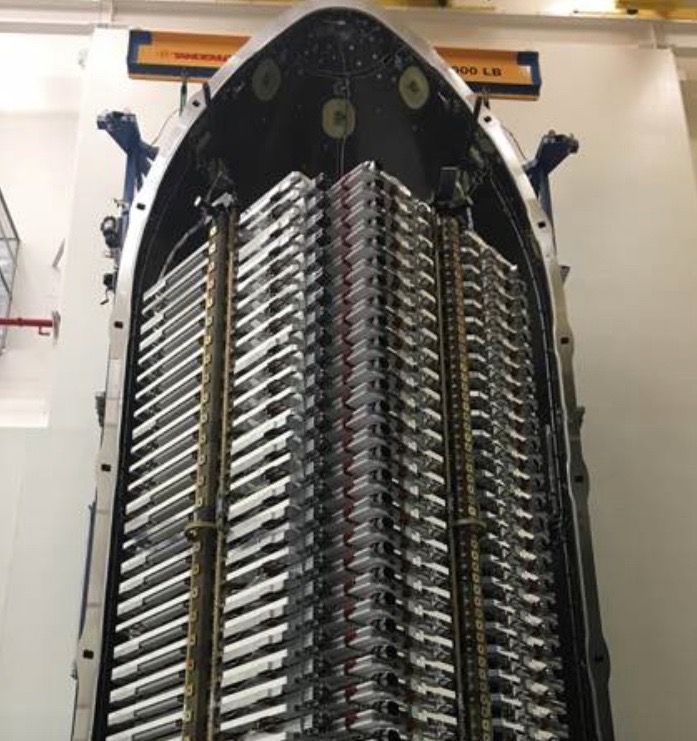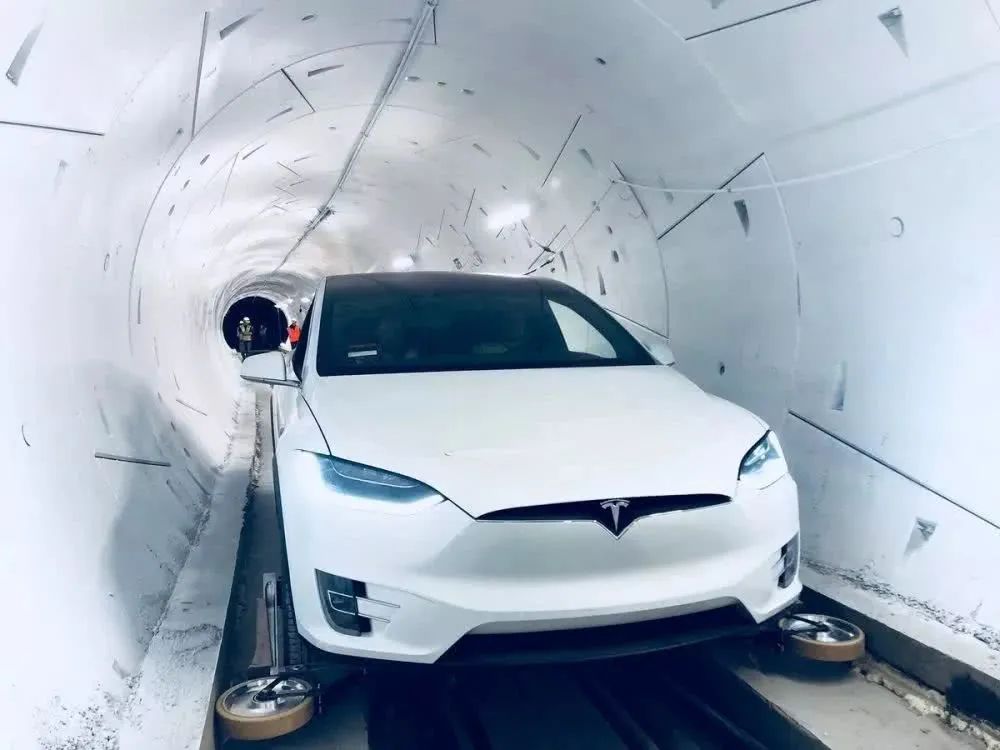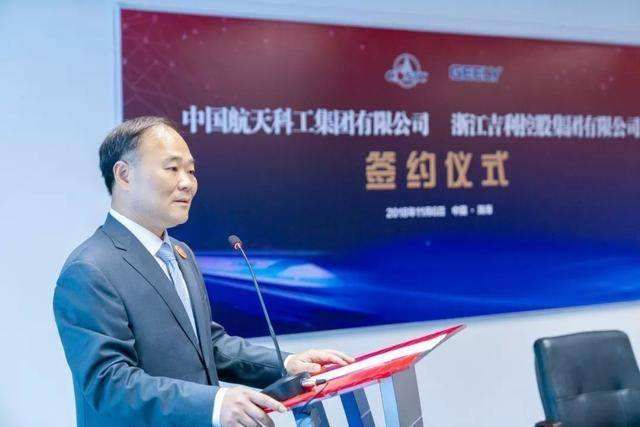Geely builds satellites, Musk’s Chinese apprentice? | Observation
On March 3, Li Shufu officially announced the launch of the satellite project in his hometown of Taizhou, Zhejiang.
The technology group will invest 2.27 billion yuan to establish the first pulsating modular satellite intelligent AIT (final assembly integration test) center in Taizhou, planning and construction of satellite R & D center, component intelligent manufacturing center, measurement and control center, cloud computing big data platform and other facilities, drawing on the advanced assembly process of the automotive industry, to create a modular, flexible and intelligent manufacturing factory, which can flexibly meet the different model specifications of satellite assembly and testing.
It is reported that the two satellites designed and developed by the controlled Spacetime Daoyu Company have completed the appraisal and testing, and will be launched within this year to validate the world’s first commercial low-orbit navigation augmentation system.
Many people may ask, if you don’t focus on building cars, how can you build satellites?
WhyWeiStar?
Let’s take a look at the direct motivation for the satellite project first.
In the official information released, the first two ground-orbiting satellites in 2020 will be mainly used to provide high-precision positioning for high-level autonomous driving and further empower other travel businesses within the group.
In fact, there is already a GNSS system + RTK technology solution for the high-precision positioning requirements of autonomous driving, but this solution uses the method of "high-orbit satellite" navigation + ground observation station calibration. The entire system composition is more complicated and the cost is higher, which itself also pushes up the cost of high-level autonomous driving.
The low-orbit satellite to be launched has the advantages of low cost, high accuracy, and strong signal. On the premise of scale, it is not only cheap, but also effective. Within the system, there are not only high-level autonomous driving plans, but also many travel businesses that are waiting to grow – for example, the small-scale Cao Cao special car, Taili Flight, which has put mass production on the schedule, and Velocopter, which has just invested in the stock.

In other words, the diverse transportation business plates within the system provide sufficient motivation and room for chemical reactions, allowing for hands-on participation in key technologies to reduce costs and increase efficiency.
Of course, the choice is also inseparable from the stimulation of the external environment. In 2014, *************ized restrictions on private capital participation in the aerospace industry, resulting in the emergence of a number of private aerospace enterprises, such as Zero Space and Blue Arrow Space in the field of rocket launch. In 2018, it was based on this opportunity to take control of Spacetime Daoyu, which is long in satellite research and development and manufacturing.
Obviously, the two satellites to be launched this year were just the beginning. With space-time as the breakthrough point, a space-based network with a large number of low-orbit satellites was being planned. As for whether it would expand into communications and other uses besides navigation, it was worth looking forward to.
Coincidentally, the plan to launch a satellite is hard to miss the Starlink plan proposed by Musk’s space company SpaceX.
Musk’s Chinese Apprentice?
In 2015, SpaceX unveiled a grand plan called Starlink – to launch a total of 12,000 satellites to provide internet services through satellite communications around the world. Musk has said that the launch of 800 Starlink satellites will enable the system to be initially put into use.
On February 17 this year, SpaceX successfully launched the fifth batch of 60 Starlink low-orbit satellites, bringing the project to 300 low-orbit satellites.

In fact, Motorola had a similar and ambitious Iridium plan, but due to age, cost, and technical limitations, it failed to compete with ground-based base stations and fiber optic cable communications, and the plan failed in the civilian market.
The transmission speed of optical cables has its theoretical upper limit, which can only reach two-thirds of the speed of light, and base stations and optical cables are often difficult to cover remote areas. Starlink is currently mainly aimed at supplementing the ground backbone network. Compared with the Iridium plan, its satellite launch and operating costs have been greatly reduced. Once it officially starts operation, it is hoped to form a supplement to ground communication, and even cut a piece of the cake.
The logic of the satellite project is quite similar to that of Starlink – since the needs of the new business cannot be well met by the original facilities, it is necessary to start by yourself and build a new facility.
However, the current satellite project is mainly in the field of "navigation and positioning", which is an order of magnitude different from the global "communication". And in terms of the number of launches, the satellite has not been launched, and SpaceX’s Satrlink has been far ahead.
From this perspective, the fledgling satellite project can only be called SpaceX’s little apprentice.
It should be pointed out that even Musk and SpaceX do not mean that they are naturally correct. For Musk’s Starlink, some communication experts pointed out that its operation method cannot effectively achieve a large number of point-to-point communications. He believes that for the mobile communication needs of the 5G era, "a communication system composed of tens of thousands of satellites cannot be said to be useless, but at most it is only an auxiliary role, and the role is very small."
Not to mention, there has been a series of criticisms of "negative externalities" in the aerospace technology professional field for Musk’s Starlink plan.
Observers in the private aerospace industry believe that the technological generation gap between Chinese and American private aerospace companies has reached one or even two generations. As a young apprentice of SpaceX, the satellite project of China and the United States may also be limited by this in the case of decades of space technology gap between China and the United States.
Targeting the infrastructure?
For the satellite project, there are many voices in the industry as another expansion of the three-dimensional travel map. The routing agency agrees with this, but in addition, we would like to say something different.
When talking about Mr. Musk, people often marvel at his product capabilities and technical insight, but often overlook the fact that Mr. Musk is even more powerful because of his passion for transforming industry infrastructure and his unique methodology. This is true of several of his companies – converting cars from fuel to electric; SpaceX, which has set its sights on transforming human communications with a space-based internet; and the Boring Company, which uses "skateboards" to transport vehicles at high speed in tunnels.

Musk’s companies often try to build a new infrastructure for an industry by moving beyond the industry’s established solutions, and there are some similarities in their interest in infrastructure to Musk’s companies.
The satellite project released seemed to be out of sync with its main car industry, but in fact it was not. It saw that future travel had put forward new demands for infrastructure and saw this opportunity.
It can be seen from the statement that the navigation and positioning of its satellites will be aimed at the infrastructure of the whole industry in the future – "This system will also be open to ecological partners. The satellite project will also be based on aerospace technology, deeply integrated with smart manufacturing, future travel, big data and other industries, and establish an open and win-win cooperation ecosystem."
When transitioning to a technology company and a travel company, it is not difficult to find its interest in infrastructure from its investment in the travel sector: in July 2018, together with Tencent and China Railway Investment Co., Ltd., the State Railway Jixun was established, aiming to provide WiFi services for railway passengers; in August 2018, it was announced that it would cooperate with China Aerospace Science and Industry Corporation to jointly develop a super high-speed rail with a speed of 4,000 kilometers per hour.

The example shows that if automakers want to transform into mobility service providers, the next stage of competition may be to take the lead in building infrastructure.
In fact, under the trend of the new four modernizations of automobiles, due to stricter regulations and consumer differentiation, products are becoming more and more difficult to make, and countless car companies are struggling. Car companies that aspire to transform into technology companies and travel service providers are even more difficult, perhaps due to genetic incompatibility, or perhaps the timing has not yet arrived, which is why many car companies are shrinking their strategies in the field of travel.
Interestingly, it is bucking the trend, not only continuing to expand strategically, but also choosing to start with difficult infrastructure, which is commendable. However, infrastructure building has the characteristics of long cycle, heavy assets, and slow returns, and is facing considerable pressure internally and externally. Do you have the strategic resolve and sufficient funds to build these infrastructure?
In addition to this, there are other issues to be resolved in terms of policy. Although the State Council issued an official document in 2014 to encourage the private economy to enter the research and development, launch and operation of satellites, the relevant policy details are not yet sound. For communications satellites, there are also qualifications and access standards for communication operations, etc.
Compared with the United States, which opened its industry earlier and the government withdrew earlier, although the strong manufacturing and engineering capabilities of "China Speed" are latecomer advantages that we can rely on, how to define the boundaries of rights and responsibilities between enterprises and the government, and how to cultivate the marketization of the civilian satellite industry will be many external uncertainties of the satellite project.
Under various tests, will the satellite project be a deep-rooted infrastructure to look up at the stars, or will it eventually become a "satellite launch" of the Great Leap Forward? This remains to be tested by time, and the routing agency will further track and observe.